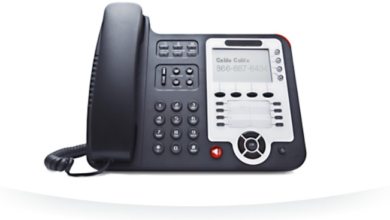What is a Solar Battery? Powering Homes, Road Trips & Wilderness Camps

Electricity is one of the top things that we take for granted in our daily lives until the power goes down and we are left stranded. However, as energy needs grow and outages become more common, more people are turning to solar energy setups that don’t rely on the grid and help the world shift towards cleaner power solutions.
But what is a solar battery in the first place? A solar battery harnesses the power of solar energy to help you power all your appliances when grid power is not available so that you can continue living a normal life.
Jackery brings highly capable, reliable, and efficient solar power backup for homes with multiple portable outlets that will help you navigate power outages and adopt green energy practices. This article will help you understand what a solar battery is, how it works, and what its applications are.
What is a Solar Battery?
Before we move towards the applications of solar energy in day-to-day life, it is important to understand what solar battery is.
A solar battery is a device that stores electricity produced by solar panels so that the energy can be used later when the sun is not shining or when grid power is unavailable. It acts as the main backup source for solar energy systems and allows you to stay powered at any time of the day, regardless of weather conditions or location.
How it works
Solar panels capture sunlight and convert it into Direct Current (DC) electricity. The DC power is first regulated by a charge controller, which controls the flow of electricity, making sure that the voltage and current remain within safe limits. Without the charge controller, the battery could overcharge or wear out more quickly.
Once the energy is safely stored inside the battery, it can either be used directly by devices that run on DC power or passed through an inverter to convert it into AC electricity for running standard home appliances.
Now, let’s have a look at solar battery types:
Different Types of Solar Batteries
There are different types of solar batteries used today. Lithium-ion batteries are the most widely adopted because of their long lifespan, compact size, and faster charging capability. They are highly efficient and suitable for both home installations and portable power systems. On the other hand, lead-acid batteries, which have been used for decades, are more affordable but tend to be heavier, slower to charge, and require regular maintenance. Meanwhile, newer technologies such as solid-state and sodium-ion batteries are being developed, offering safer chemistry and better storage performance, although they are still in the early stages of mass adoption.
Importance of solar batteries for Energy Independence
Solar batteries give you control over your energy usage, so you do not have to rely fully on the power grid or worry about electricity outages. Instead, you generate your own power during the day and store the excess energy for later use. Solar batteries are also being used extensively to tackle the rising energy costs in different parts of the world. While capital solar power battery costs may seem high, you will save money every month, which will help you recover your investment in a couple of years.
From a sustainability point of view, solar batteries eliminate the need for fuel-powered generators. They run silently, release no harmful emissions, and support a cleaner environment. Using solar batteries means that you are reducing your carbon footprint, cutting down air pollution, and supporting long-term environmental health without compromising on daily energy needs.
Solar Batteries at Home: A Smart Energy Backup
What is solar battery’s role in daily home life? Power outages can happen without warning, and when they do, they disrupt the whole rhythm of your daily life.
These outages bring uncertainty and inconvenience, especially when the power stays out longer than expected. That is why more homeowners are choosing solar batteries as a dependable backup to keep their homes running without interruption. Homeowners use these devices as a reliable backup for keeping all the essentials up and running so that they can continue living a normal life without any breaks.
When integrated with a home solar system, a solar battery stores the excess energy produced during the day. This stored power becomes available whenever needed, and is mostly used during nighttime or in case of a blackout. It helps keep your appliances running without any manual switching or dependency on fuel-based generators.
In a real-life situation, a solar battery can be used for a wide variety of purposes. For instance, it can run your refrigerator during a storm so that food doesn’t go to waste. It can power the lights in key rooms, keep your internet router working, and even charge laptops or phones so that you can stay connected.
Apart from emergency use, solar batteries also help reduce monthly electricity bills. In areas with time-of-use pricing, electricity costs more during peak hours. A solar battery allows you to avoid those high rates by using stored energy instead of drawing power from the grid during peak hours.
Solar batteries are also useful for outdoor enthusiasts and help them explore their favorite destinations at their own pace. Let’s see how:
Road Trips & RVs: Solar Batteries for Life on the Move
Traveling in an RV or camper van gives you the freedom to explore your favorite places at your own pace. However, staying powered up on the road remains a challenge. Solar batteries solve this problem by giving you access to clean and portable energy wherever you go, without the noise or hassle of traditional fuel-based generators.
A large number of RV travelers and van lifers rely on solar batteries to run their essential appliances during trips. A typical setup can power a mini fridge to keep food fresh, a few fans to stay cool, LED lights for night use, and chargers for phones, tablets, or even laptops. With the right battery capacity, you can take extended trips without needing to stop at powered campsites or rely on fuel.
Another major advantage of using solar batteries for outdoor adventures is their quiet operation. Fuel generators are loud, heavy, and require constant refueling. In contrast, solar batteries work silently and don’t release any harmful fumes, which makes them a much better choice for travelers who prefer peaceful campsites or want to stay in nature without disturbing the environment.
Charging the solar battery on the road is also an easy and seamless process. Modern-day systems allow you to recharge the battery through foldable solar panels during the day or even from your vehicle’s DC port while driving. This flexibility means you don’t have to depend on finding a plug-in source every night.
Solar batteries are equally helpful for camping and wilderness adventures. Let’s see how:
See also: Creative Ways to Simplify Junk Removal at Home
Camping & Wilderness Adventures: Off-Grid Power Solutions
For campers and hikers who enjoy exploring remote places, access to reliable power can make the experience safer and more comfortable. But what is solar battery’s role in this situation? Solar batteries are widely used in outdoor adventures because they are easy to carry, simple to use, and capable of running essential gear without needing fuel or electricity hookups.
These portable systems can run campsite lights, charge mobile phones, power small fans, and even support compact cooking appliances. Many travelers also rely on them to recharge cameras and drones during long outdoor trips. Having access to power makes it easier to document the journey, stay in touch, and manage basic tasks without stress.
One of the reasons why outdoor enthusiasts use solar batteries is due to their lightweight design. Most portable units are compact and can easily fit into a backpack or camping box. Some systems even come with foldable solar panels that can be set up on the ground or hung from a tree to draw sunlight throughout the day. This makes it simple to stay powered even when you are far away from the nearest town or charging station.
Another big benefit of using these systems is the clean and quiet nature of solar-powered batteries. Compared to fuel-powered generators, which create noise and release fumes, what solar battery technology offers here is a silent, eco-friendly alternative. They don’t disturb the natural surroundings or affect the environment, which is especially important in protected or eco-sensitive areas. Many camping sites do not even allow fuel-based generators due to the environmental damage they cause and the noise they generate.
Now that you know what a solar battery is and what its applications are, let’s have a look at the topmost solar solutions available in the market today.
Jackery: Your Top Choice
Jackery has become a trusted name for solar-powered solutions for both home and outdoor use. Two of their top models include the Jackery Solar Generator 2000 v2 and the Jackery Solar Generator 5000 Plus. Both of these solar generators are designed to tackle different electricity needs. Let’s have a look at both of them one by one:
Jackery Solar Generator 2000 v2
The Jackery Solar Generator 2000 v2 is a highly flexible power solution, which comes with 2042Wh of storage capacity and can provide power output of up to 2200W. This means you can easily use them for most household and outdoor purposes.
The unit remains compact and lightweight due to its weight of only 17.9 kg. It comes with a foldable handle and wheels, which makes its carrying and storage easy.
The Jackery Solar Generator 2000 V2 comes with multiple charging methods, which makes it a flexible battery backup solution. The Emergency Super Charge will let you charge the battery with a wall charger in almost 1.7 hours,
If you are using solar power, pairing it with two SolarSaga 200W panels gives you a full recharge time of around 7.5 hours. The unit can also charge through a vehicle port during outdoor expeditions in almost 24 hours.
The system runs quietly, staying under 30 decibels, which makes it suitable for apartments, bedrooms, or any quiet setting. The built-in LiFePO₄ battery is designed to last for more than ten years of daily use, making it a reliable answer to what solar battery is capable of in long-term home and outdoor use.
Jackery Solar Generator 5000 Plus
The Jackery Solar Generator 5000 Plus is a large-capacity, high-output solar generator built for serious home energy demands. With a base capacity of over 5kWh and the ability to expand up to 60kWh, it’s designed to serve as a full backup for essential appliances, heavy-duty tools, and entire homes during extended outages.
It supports dual voltage output (120V/240V), allowing it to run both standard home electronics and high-powered appliances like dryers, ovens, or portable AC units. With up to 7200W continuous output and a 14,400W surge peak, this system can handle even the most power-hungry equipment without a hitch—clearly showing what is solar battery potential when scaled for full home backup.
The Jackery Solar Generator 5000 Plus also supports fast and flexible charging. When connected to two SolarSaga 500W panels, it recharges in approximately 6.5 hours. Using AC wall charging alone takes around 3.5 hours, and if connected to Jackery’s Smart Transfer Switch, charging time can drop to just 1.7 hours.
One of the key advantages of using this system is its zero-downtime power transfer. The built-in UPS function ensures that sensitive electronics, such as desktop computers, medical devices, or Wi-Fi routers, continue running even when the main power source fails.
Conclusion
Solar batteries have transformed the way people manage power. From running your fridge during blackouts to keeping your devices charged while camping, they offer a stable and sustainable energy solution when the grid cannot be trusted.
As more households and travelers look for ways to reduce their dependence on fossil fuels and prepare for unexpected outages, solar battery systems have emerged as a practical solution. Jackery continues to lead this shift by offering power stations that blend reliability, long lifespan, and true off-grid capability—perfect examples of what is solar battery innovation doing for modern life.




